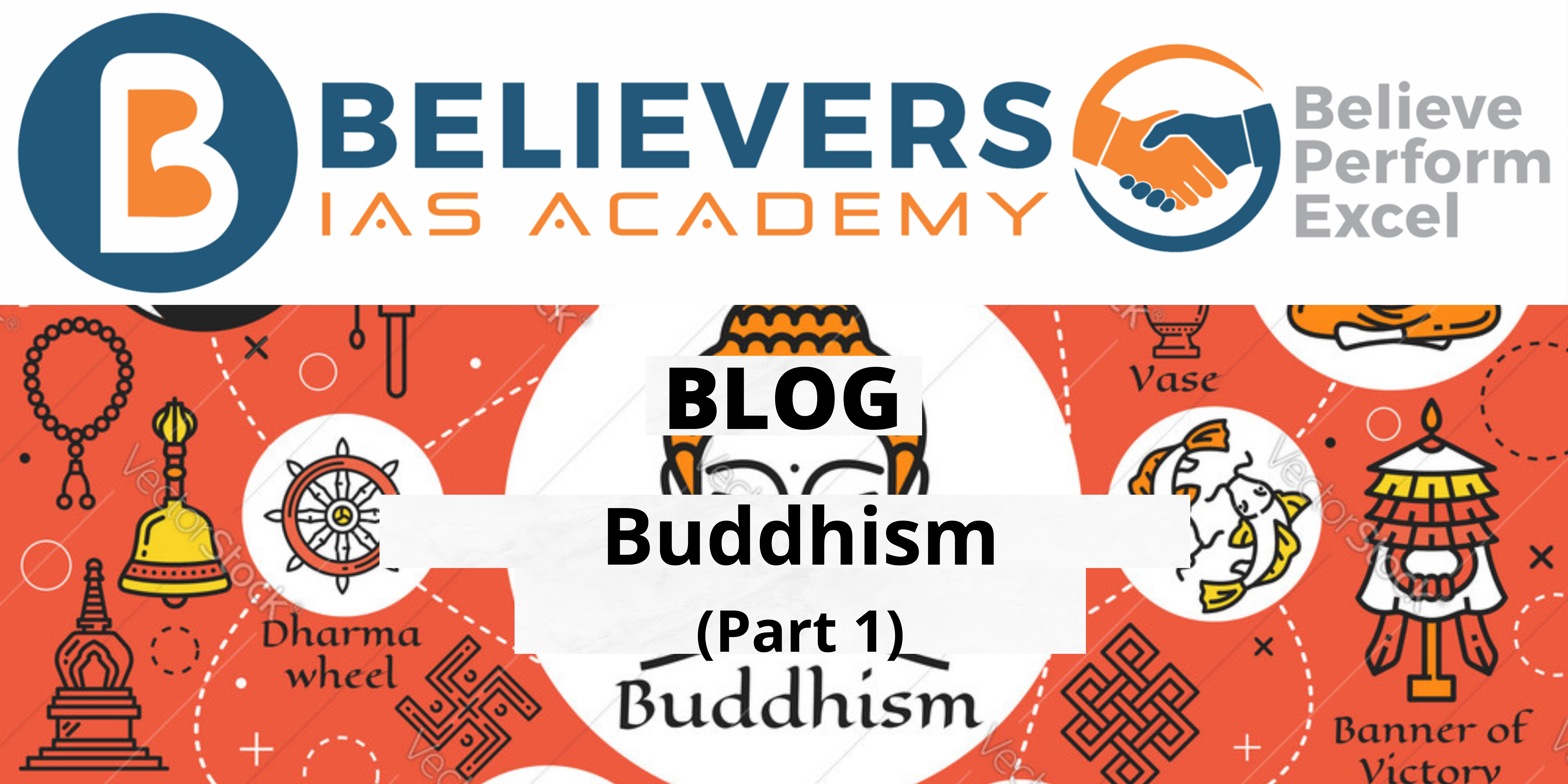Buddhism
Part-1
About Buddhism
- Buddhism is one of the most prevelant religions of South and South-Eastern Asian countries.
- It originated in India over 2,600 years ago when Gautama Buddha gained enlightenment and spread his teachings.
- Currently it is the world’s fourth-largest religion and has over 520 million followers i.e., about seven percent of the global population.
- Buddhism encompasses a variety of traditions, beliefs, and spiritual practices that are largely based on the Buddha’s teachings and their resulting interpreted philosophies.
The history of Gautama Buddha
- Gautama Buddha, born as Siddhartha was the son of Śuddhodana and Maya Devi who were the rulers of Sakya republic.
- Siddhartha married Yashodhara and had a son Rahula.
- It is believed that as a Prince Siddhartha did not see any misery in his early years.
- One day he saw four sights which shook his world view, which were an old man, a man suffering from disease, a dead man, and finally an ascetic.
- Seeing these Siddhartha left the house in an event known as Mahabhinishkramana or the great renunciation.
- He searched for a way out of this misery and attained Bodhi (enlightenment) under a pipal tree at Bodhgaya, a village in Bihar.
- He gave his first sermon in the village of Sarnath, near the city of Benares in UP.
- The event of first sermon is known as Dharma-Chakra-Pravartana or turning of the wheel of law.
- He died at the age of 80 in 483 BCE at a place called Kushinagara a town in UP.
- The death of Buddha is called Mahaparinibbana or Final Nirvana.
The four truths of Buddhism:
Buddha after attaining enlightenment declared the four noble truths which were
- Dukkha: – the world is full of sorrow
- Dukkha Samuddaya: – Desire is the cause of sorrow
- Dukkha Nirodha: – there is an ecape from sorrow
- Atthanga Magga: -the eight-fold path leading to the cessation of sorrow
Atthanga Magga
Buddha believed that one can attain salvation or moksha through following the Atthanga Magga or eight-fold path.
The eight fold path contains:
- Right view
- Right intention
- Right speech
- Right action
- Right livelihood
- Right mindfulness
- Right effort
- Right concentration
Other tenets of Buddhism:
- Buddhism does not recognise the existence of soul hence it follows the idea of anatta.
- However, Buddhism believes in the existence of karma and believes that desire is the reason for creation of karma.
- Buddhism also believes in impermanence or anicca which says that all existence is transient, evanescent, inconstant. Hence says that attachment to material properties is not worthwhile.
- Anicca, along with anatta and dukkha forms the trilakshana or three marks of existence in Buddhism.




